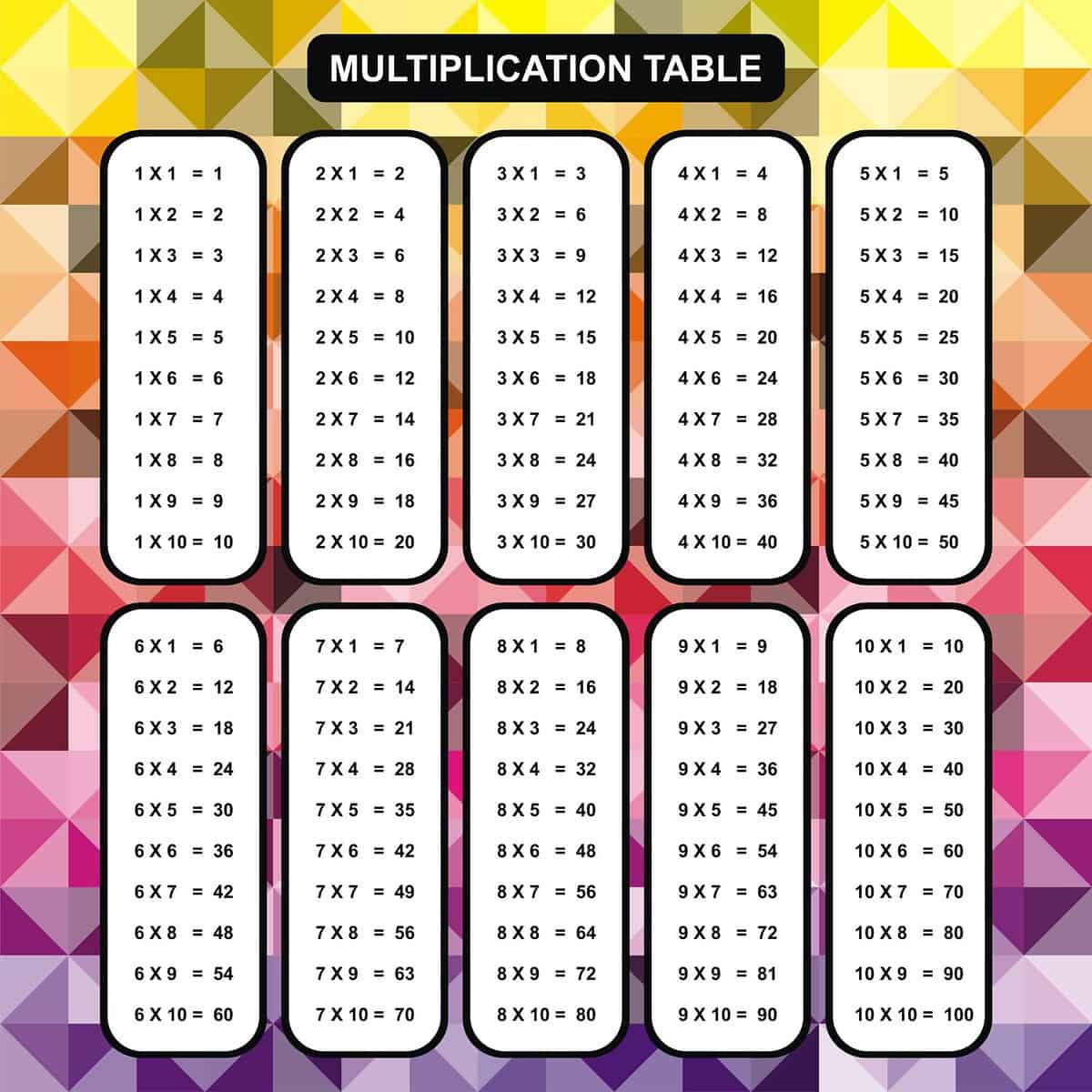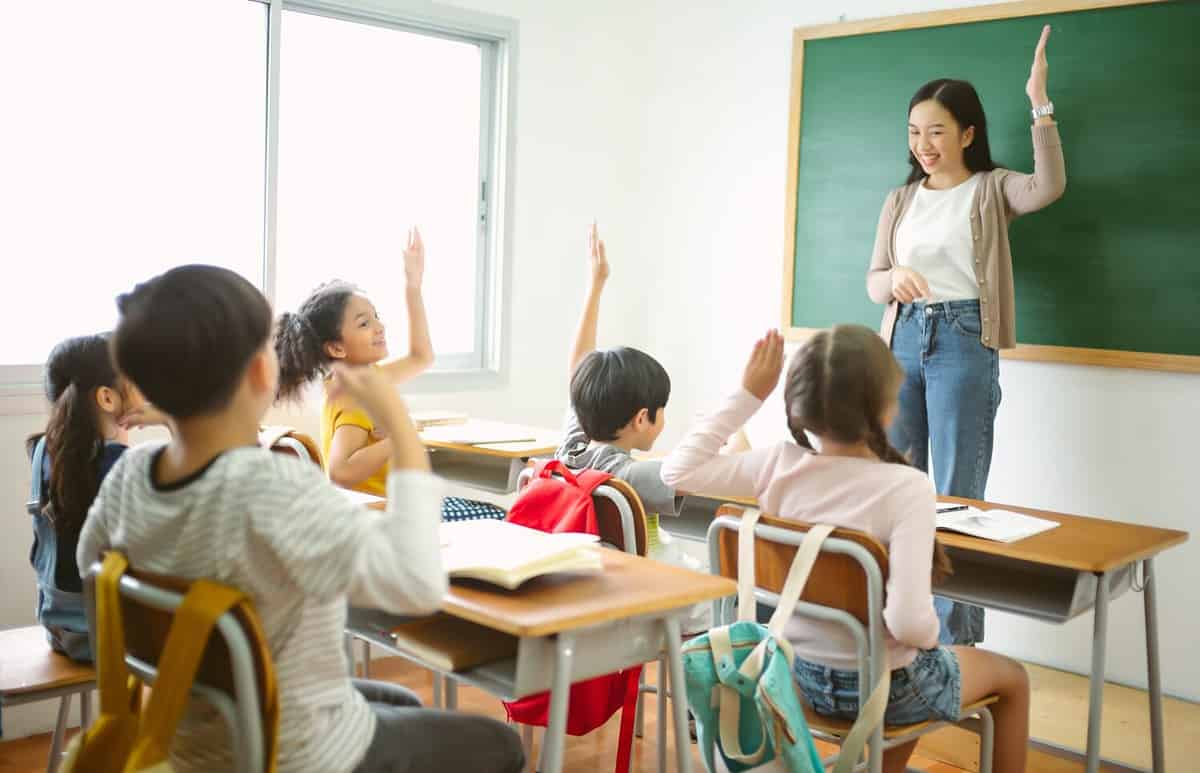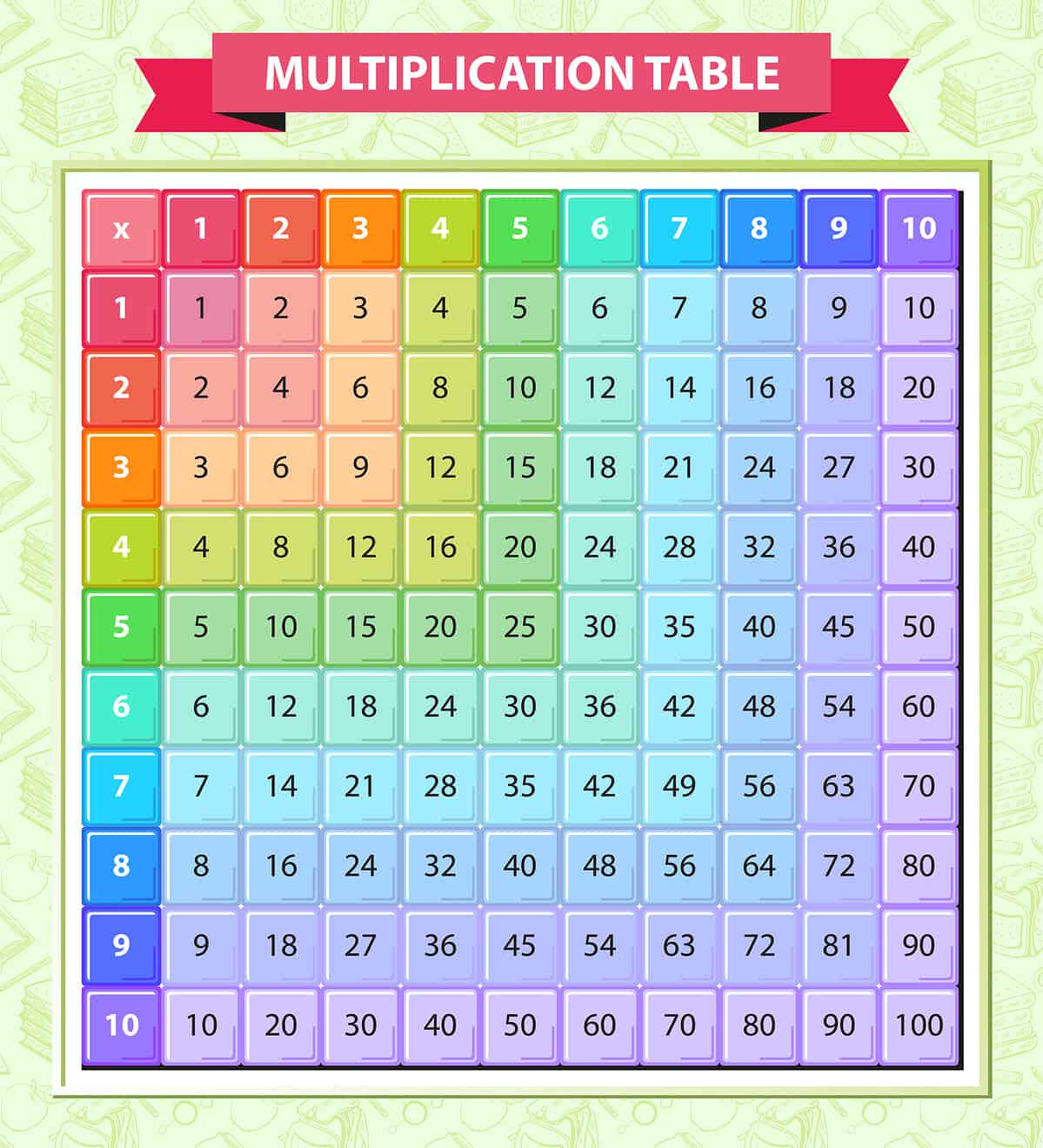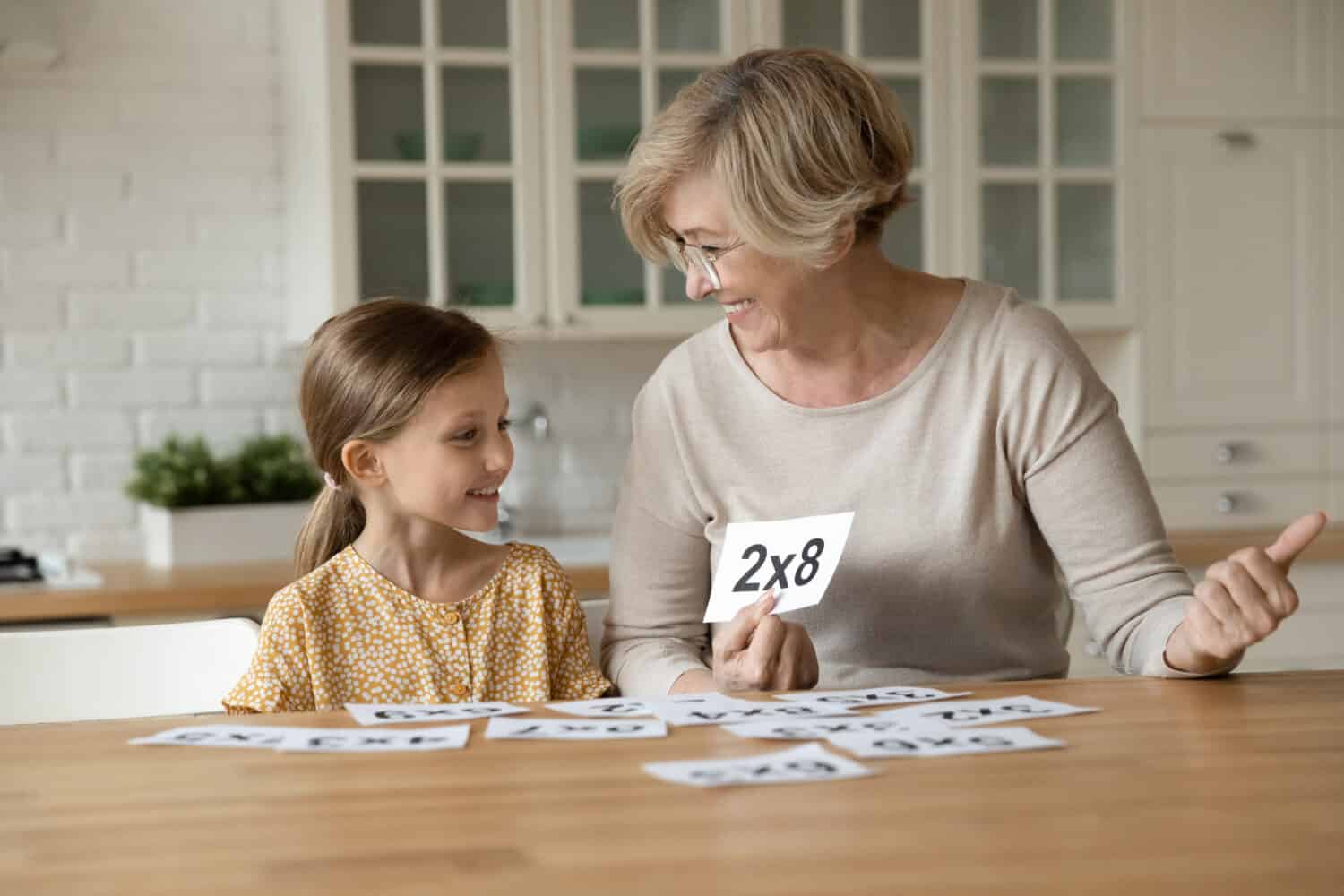Mathematics is a fundamental part of your child’s education journey. In mathematics, there are four core concepts: addition, subtraction, multiplication, and division. The four core concepts help lay the groundwork for developing and understanding more complex math concepts. While addition and subtraction are taught first, multiplication and division are not far behind. Multiplication is taught before division and helps students understand working with large groups of numbers and with memory skills.
Oftentimes, tables are used to help students memorize their multiplication facts. These tables allow students to recognize, memorize, and easily recall multiplication facts from 1-100. Some tables are presented as one large table, while others are broken down into segments to showcase each individual number and their multiplication facts. Both charts help in assisting the child’s memory and multiplication practice.
In this article, we will provide you with a free multiplication table as well as tips on how to teach multiplication easily and effectively to your child. In addition, we will discuss the importance of multiplication in the classroom and its benefits in the real world.

Multiplication table for numbers 1-100: helps students to recall their multiplication facts quickly.
©udaix/Shutterstock.com
Benefits of Using a Multiplication Chart
Multiplication charts and tables help students to learn their multiplication facts. Below are some of the top benefits of using a multiplication chart.
- Recognition and Recall: seeing the chart will assist students in numerical and equation recognition. Repeatedly seeing the numbers and facts over and over again will assist them in their ability to recall and recognize these facts.
- Improves memory: repeatedly using these tables helps children to commit these facts to memory. Besides increasing their ability to memorize multiplication facts, this table allows the child to stretch their memory muscles in general.
- Increased self-confidence: learning these facts about becoming good at mentally recalling them can help to improve the students’ self-esteem, which can, in turn, help them become better at more complicated math processes.
When Do Children Learn Multiplication?
In most cases, children begin to learn multiplication in the second grade. Children are first introduced to addition between the ages of five and seven. After mastering that skill, they move on to subtraction. Once those two skills are mastered, multiplication comes next. According to the Mathematics Standards of Learning for Virginia Public Schools, “The Grade 3 Standards place emphasis on developing an understanding of the concepts of multiplication and division.” By the end of this grade, students should be able to recall their multiplication facts automatically.
How Do Children Learn Multiplication?

Multiplication is often introduced in second grade and solidified in third grade.
©zEdward_Indy/Shutterstock.com
There is some debate on how children view multiplication. One view is that children view multiplication as a form of repeated addition. The second says that repeated addition is just used to find the answer to an equation but that the understanding of the equation is more rooted in a deeper understanding of the correspondence or relationship between the two numbers or sets of numbers. A study involving students from two primary schools in England tested which of these theories was more accurate regarding how children think about and best learn multiplication. Half of those students were taught multiplication with a focus on repeated addition, while the other half were taught with a focus on correspondence.
Based on the study's results, it was evident that most children learn multiplication better when taught with the one-to-many correspondence approach. “The children who participated in an intervention that offered to them the opportunity to practice the use of this schema in the solution of multiplicative reasoning problems made significantly more progress than those who operated on the same numbers but in the context of solving repeated additions.”
The Importance of Multiplication
With the growing use of technology, many people may begin to think that learning multiplication facts is no longer relevant. Why bother learning them if you always have a calculator in your pocket? Regardless of improving technology, learning multiplication is still highly important in a child’s mathematical education. Multiplication is one of the fundamental building blocks of education and allows an easier transition of math skills into adulthood.
Multiplication is the basis of many harder math processes, such as algebra and calculus. Learning and becoming skilled at multiplication allows students to solve math problems with ease and confidence, skills that can help them in their day-to-day lives as adults. Some common examples of when this skill may be used in a real-life scenario include:
- Figuring out how much food to cook or how many placemats to set out for the holidays.
- Decide how many Christmas cards to send out.
- Calculating exchange rates for spending when traveling.
Not only does this skill prove beneficial on its own, but it also helps your child develop an overall number sense. This can help build counting, grouping, estimation, time, and distance skills.
Ways to Assist Your Child With Learning Multiplication

Being skilled in multiplication helps students build skills such as counting, grouping, estimation, time, and distance.
©iStock.com/Ekaterina Pushina
While each child learns differently, and there are various ways to teach multiplication, these few tips and tricks can be effective when helping your child learn how to multiply.
Use physical manipulatives
In the beginning, mental math is a difficult concept for many emerging learners. To help them visualize what multiplication represents, use physical manipulatives. You can use anything: buttons, coins, fruit, whatever objects you have lying around the home that are small, plentiful, and easy to manipulate. If you don’t have physical objects to manipulate, you can also draw an image.
For example let’s say you wanted to teach your child to multiply 5 x 4. You would make five groups of four objects, lay them out, and have your child count to understand the multiplication equation.
Skip Counting
For some learners, skip counting helps them better solve multiplication problems. This is easier for some students to understand because it uses the principles of addition that they learned in earlier years. For example, if the equation was 5 x 3, you could have your child think of it as the following:
5
5 + 5 = 10
10 + 5 = 15
Teach the Commutative Property
To help students recall easier multiplication facts, teach them about the commutative property. This property simply states that changing the equation's order does not change its outcome. For example, 6 x 2 and 2 x 6 both equal 12. Having students understand this property will help them with easier recall as they only have to memorize half of the facts.
Multiplication in the Real World
The best way for students to learn new skills is to make it applicable to them and their world. When teaching multiplication, try to make it relevant to your child’s life. For example, if your child has a birthday party coming up, make multiplication problems that focus on that. If they have ten friends and everyone needs an invitation, how many invitations do they need to send out? That is practicing the equation 10 x 1. Or let’s say every friend coming gets a goody bag. In that goody bag, there are three pieces of candy. You want to know how many pieces of candy you need to buy for your child’s party. Now, you are practicing the equation 10 x 3.
Making it relatable to your child’s life or things that the two of you would do in your everyday lives not only makes it more fun for your child but also highlights the skill's importance. It will help show your child that they will need this skill every day, and that will encourage them to learn and grow with their math skills.
Conclusion
Free multiplication charts are available to help your child practice their multiplication facts and increase their skills. Multiplication is a core skill in mathematics that helps lay the foundation for various other math skills. Making it applicable to your child’s life and using real-life manipulatives can effectively teach these concepts. If you want to help your child better learn and practice their multiplication facts, you can try creating or downloading free multiplication charts for more practice.
Up Next:
The image featured at the top of this post is ©fizkes/Shutterstock.com
